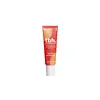What's inside
What's inside
 Key Ingredients
Key Ingredients

 Benefits
Benefits

 Concerns
Concerns

 Ingredients Side-by-side
Ingredients Side-by-side

Water
Skin ConditioningIsopropyl Alcohol
SolventSodium Citrate
BufferingBehenyl Alcohol
EmollientCitric Acid
BufferingGlycerin
HumectantCetearyl Olivate
Dimethicone
EmollientHydrogenated Olive Oil
Skin ConditioningGlyceryl Stearate
EmollientPEG-100 Stearate
Sorbitan Olivate
EmulsifyingEthylhexyl Olivate
Skin ConditioningOlea Europaea Fruit Oil
MaskingHydroxyethylcellulose
Emulsion StabilisingOlea Europaea Oil Unsaponifiables
Skin ConditioningBenzalkonium Chloride
AntimicrobialStearic Acid
CleansingWater, Isopropyl Alcohol, Sodium Citrate, Behenyl Alcohol, Citric Acid, Glycerin, Cetearyl Olivate, Dimethicone, Hydrogenated Olive Oil, Glyceryl Stearate, PEG-100 Stearate, Sorbitan Olivate, Ethylhexyl Olivate, Olea Europaea Fruit Oil, Hydroxyethylcellulose, Olea Europaea Oil Unsaponifiables, Benzalkonium Chloride, Stearic Acid
Water
Skin ConditioningCaprylic/Capric Triglyceride
MaskingIsododecane
EmollientGlycolic Acid
BufferingIsopropyl Alcohol
SolventPEG-6
HumectantGlycerin
HumectantHydroxyethyl Acrylate/Sodium Acryloyldimethyl Taurate Copolymer
Emulsion StabilisingSodium Hydroxide
BufferingGlyceryl Stearate
EmollientPEG-100 Stearate
Polymethyl Methacrylate
Arachidyl Alcohol
EmollientArachidyl Glucoside
EmulsifyingBehenyl Alcohol
EmollientHelianthus Annuus Seed Oil
EmollientPolysorbate 60
EmulsifyingCI 17200
Cosmetic ColorantRetinal
Skin ConditioningSilybum Marianum Fruit Extract
Skin ConditioningSorbitan Isostearate
EmulsifyingTocopherol
AntioxidantWater, Caprylic/Capric Triglyceride, Isododecane, Glycolic Acid, Isopropyl Alcohol, PEG-6, Glycerin, Hydroxyethyl Acrylate/Sodium Acryloyldimethyl Taurate Copolymer, Sodium Hydroxide, Glyceryl Stearate, PEG-100 Stearate, Polymethyl Methacrylate, Arachidyl Alcohol, Arachidyl Glucoside, Behenyl Alcohol, Helianthus Annuus Seed Oil, Polysorbate 60, CI 17200, Retinal, Silybum Marianum Fruit Extract, Sorbitan Isostearate, Tocopherol
 Reviews
Reviews

Ingredients Explained
These ingredients are found in both products.
Ingredients higher up in an ingredient list are typically present in a larger amount.
Behenyl Alcohol is a type of fatty alcohol (these are different from the drying, solvent alcohols).
Fatty Alcohols have hydrating properties and are most often used as an emollient or to thicken a product. They are usually derived from natural fats and oils; behenyl alcohol is derived from the fats of vegetable oils.
Emollients help keep your skin soft and hydrated by creating a film that traps moisture in.
In 2000, Behenyl Alcohol was approved by the US as medicine to reduce the duration of cold sores.
Learn more about Behenyl AlcoholGlycerin is already naturally found in your skin. It helps moisturize and protect your skin.
A study from 2016 found glycerin to be more effective as a humectant than AHAs and hyaluronic acid.
As a humectant, it helps the skin stay hydrated by pulling moisture to your skin. The low molecular weight of glycerin allows it to pull moisture into the deeper layers of your skin.
Hydrated skin improves your skin barrier; Your skin barrier helps protect against irritants and bacteria.
Glycerin has also been found to have antimicrobial and antiviral properties. Due to these properties, glycerin is often used in wound and burn treatments.
In cosmetics, glycerin is usually derived from plants such as soybean or palm. However, it can also be sourced from animals, such as tallow or animal fat.
This ingredient is organic, colorless, odorless, and non-toxic.
Glycerin is the name for this ingredient in American English. British English uses Glycerol/Glycerine.
Learn more about GlycerinGlyceryl Stearate is a mix of glycerin and stearic acid.
It is used to stabilize the mixing of water and oil ingredients. By preventing these ingredients from separating, it can help elongate shelf life. It can also help thicken the product's texture.
As an emollient, it helps soften skin and supports barrier-replenishing ingredients.
In cosmetics, Glyceryl Stearate is often made from vegetable oils or synthetically produced.
This ingredient may not be fungal-acne safe
Fun fact: The human body also creates Glyceryl Stearate naturally.
Learn more about Glyceryl StearateIsopropyl Alcohol is more commonly known as rubbing alcohol. It is most commonly used as a solvent, meaning it helps other ingredients dissolve.
This ingredient is an astringent alcohol. Astringent alcohols may also irritate skin as they high amounts may strip away your skin's natural oils.
Other types of astringent alcohols include:
According to the National Rosacea Society based in the US, you should be mindful of products with these alcohols in the top half of ingredients.
Any type of sanitizing product will have high amounts of alcohol to help kill bacteria and viruses.
Learn more about Isopropyl AlcoholPeg-100 Stearate is an emollient and emulsifier. As an emollient, it helps keep skin soft by trapping moisture in. On the other hand, emulsifiers help prevent oil and water from separating in a product.
PEGS are a hydrophilic polyether compound . There are 100 ethylene oxide monomers in Peg-100 Stearate. Peg-100 Stearate is polyethylene glycol ester of stearic acid.
Water. It's the most common cosmetic ingredient of all. You'll usually see it at the top of ingredient lists, meaning that it makes up the largest part of the product.
So why is it so popular? Water most often acts as a solvent - this means that it helps dissolve other ingredients into the formulation.
You'll also recognize water as that liquid we all need to stay alive. If you see this, drink a glass of water. Stay hydrated!
Learn more about Water